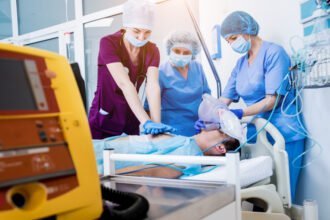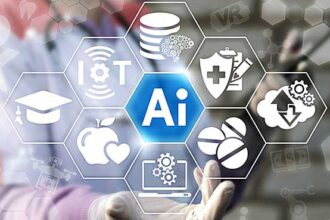Cell therapy is defined as a process whereby new cells are introduced into tissue as a method of treating disease; the process may or may not include gene therapy. Forms of cell therapy can include: transplantation of autologous (from the patient) or allogeneic (from a donor) stem cells , transplantation of mature, functional cells, application of modified human cells used to produce a needed substance, xenotransplantation of non-human cells used to produce a needed substance, and transplantation of transdifferentiated cells derived from the patient’s differentiated cells.
Cell therapy is defined as a process whereby new cells are introduced into tissue as a method of treating disease; the process may or may not include gene therapy. Forms of cell therapy can include: transplantation of autologous (from the patient) or allogeneic (from a donor) stem cells , transplantation of mature, functional cells, application of modified human cells used to produce a needed substance, xenotransplantation of non-human cells used to produce a needed substance, and transplantation of transdifferentiated cells derived from the patient’s differentiated cells.
Once considered a segment of biomaterial technologies, tissue engineering has evolved into its own category and now comprises a combination of cells, engineering and suitable biochemical and physiochemical factors to improve or replace biological functions. These include ways to repair or replace human tissue with applications in nearly every medical specialty. Regenerative medicine is often synonymous with tissue engineering but usually focuses on the use of stem cells.
Tissue engineering and cell therapy may be considered as comprising bioengineered products that are themselves cells or are actively stimulating cell growth or regeneration. These often comprise a combination of biotechnology, medical device and pharmaceutical technologies.
Researchers have been examining tissue engineering and cell therapy for roughly 30 years. While some products in some specialties (such as wound care) have reached market, many others are still in research and development stages. In recent years, large pharmaceutical and medical device companies have provided funding for smaller biotech companies in the hopes that some of these products and therapies will achieve a highly profitable, commercial status. In addition, some companies have been acquired by larger medical device and pharmaceutical companies looking to bring these technologies under their corporate umbrellas. Many of the remaining smaller companies received millions of privately funded dollars per year in research and development. In many cases it takes at least ten years to bring a product to the point where human clinical trials may be conducted. Because of the large amounts of capital to achieve this, several companies have presented promising technologies only to close their doors and/or sell the technology to a larger company due to lack of funds.
The goal of stem cell research is to develop therapies to treat human disease through methods other than medication. Key aspects of this research are to examine basic mechanisms of the cell cycle (including the expression of genes during the formation of embryos) as well as specialization and differentiation into human tissue, how and when the differentiation takes place and how differentiated cells may be coaxed to differentiate into a specific type of cell. In the differentiation process, stem cells are signaled to become a specific, specialized type of cell when internal signals controlled by a cell’s genes are interspersed across long strands of DNA and carry coded instructions for all the structures and functions of a cell. In addition, cell differentiation may be caused externally by use of chemicals secreted by other cells, physical contact with neighboring cells and certain molecules in the microenvironment.
The end goal of stem cell research is to develop therapies that will allow the repair or reversal of diseases that previously were largely untreatable or incurable. These therapies include treatment of neurological conditions such as Alzheimer’s and Parkinson’s, repair or replacement of damaged organs such as the heart or liver, the growth of implants from autologous cells, and even regeneration of lost digits or limbs.
In a developing human embryo, a specific layer of cells normally become precursor cells to cells found only in the central nervous system or the digestive system or the skin, depending on the cell layer and the elements of the embryo that direct cell differentiation. Once differentiated, many of these cells can only become one kind of cell. However, researchers have discovered that adult body cells exist that are either stem cells or can be coaxed to become stem cells that have the ability to become virtually any type of human cell, thus paving the way to engineer adult stem cell that can bring about repair or regeneration of tissues or the reversal of previously incurable diseases.
Another unique characteristic of stem cells is that they are capable of self-division and self-renewal over long periods of time. Unlike muscle, blood or nerve cells, stem cells can proliferate many times. When exposed to ideal conditions in the laboratory, a relatively small sample of stem cells can eventually yield millions of cells.
There are five primary types of stem cells: totipotent early embryonic cells (which can differentiate into any kind of human cell); pluripotent blastocyst embryonic stem cells, which are found in an embryo seven days after fertilization and can become almost any kind of cell in the body; fetal stem cells, which appear after the eighth week of development; multipotent umbilical cord stem cells, which can only differentiate into a limited number of cell types; and unspecialized adult stem cells, which exist in already developed tissue (commonly nerves, blood, skin, bone and muscle) of any person after birth.
One of the key methods by which to evaluate the potential market opportunities in the early stages of an industry such as tissue engineering and cellular therapy is to look at the number of current procedures that could possibly be augmented or replaced by the new technologies. In the sections that follow, we review the major areas of transplantation and estimate the clinical caseloads that reflect potential uses of tissue engineering. It should be kept in mind that it is highly unlikely that tissue engineering will replace 100% of these particular procedures, even after years of clinical usage. There will always be patients for whom certain procedures are inappropriate; other procedures may not be fully covered by insurance and hence will only be used by those patients who can afford them. Transplant of cadaver organs is likely to continue as long as these organs are available and free of disease, and the cost of transplantation is equal to or less than the cost of tissue engineering. The latter, of course, reflects a key pricing strategy for tissue engineering and cellular therapy. The clinical caseloads for the conditions addressed are enormous, hence, even with the caveats, the potential markets for TE and cell therapy are extremely significant. The competition within the infant industry is fierce, with reason.
Cell Therapy in Cardiovascular Disease
The term “cardiovascular disease” encompasses as large number of diseases of the heart and vasculature. There are an estimated 70 million Americans who could benefit from cell-based therapies for cardiovascular applications. The prevalence and incidence of cardiovascular disease in the United States are shown in the following exhibits.
Source: MedMarket Diligence Report #S520: Tissue Engineering, Cell Therapy and Transplantation: Products, Technologies & Market Opportunities, Worldwide, 2009-2018







